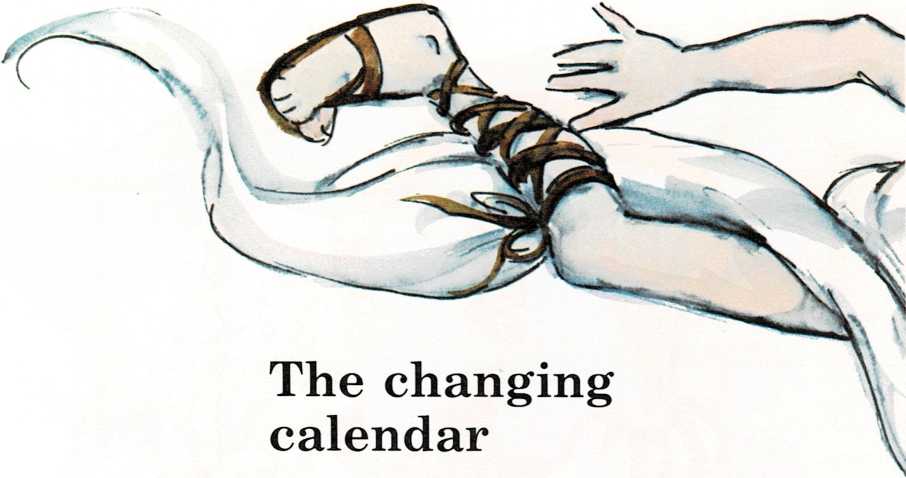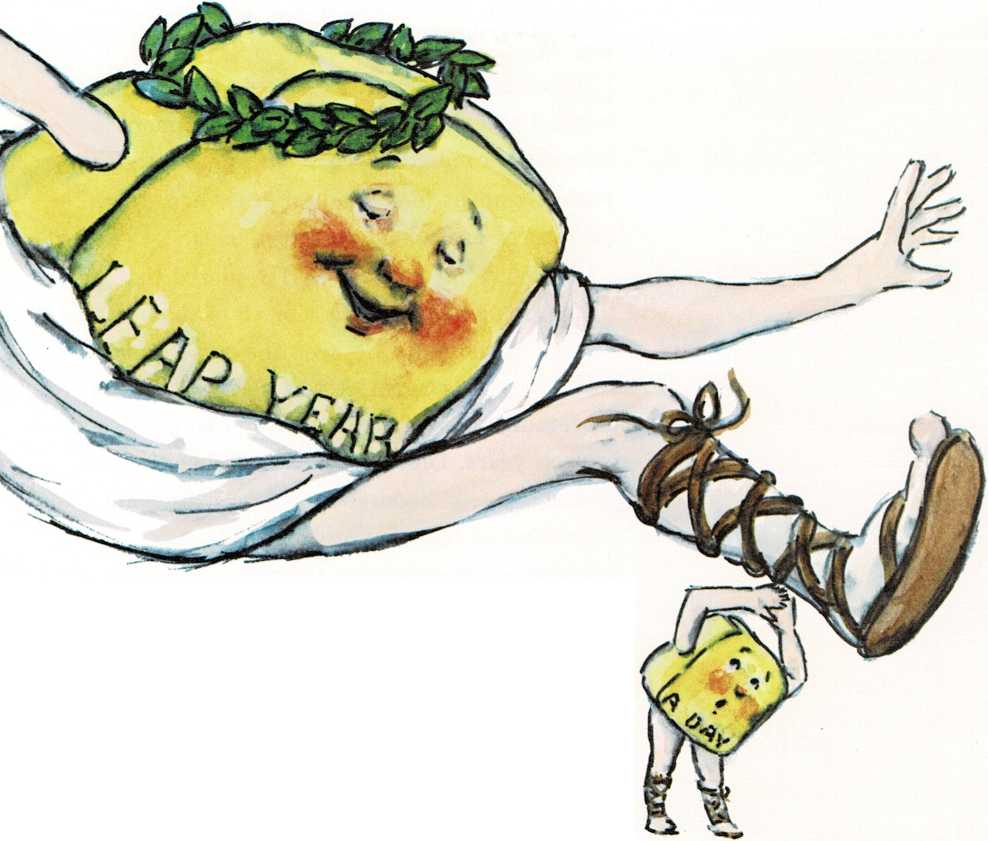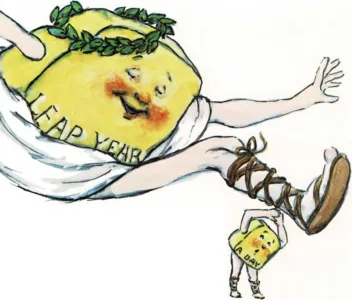
The Changing calendar
People made the first calendars by dividing a year into twelve \”moons,”
or months. But they had a problem. A year is the time it takes the earth
to travel once around the sun. This comes to about 36514 days. A
moonmonth is the time from one new moon to the next. This is about 29¥2
days. So twelve \”moons” come to about 354 days. And this is eleven days
less than a year.
Sometimes people added days or months to keep the calendar in step with
the seasons. And sometimes they paid no attention. The early Romans had
a ten-month calendar. The year, which began in March and ended in
December, was only 304 days long. They just ignored the other days.
Later, to make a better calendar, the Romans added two more months. Even
so, when the great Roman leader Julius Caesar came to power, the
calendar was out of step with the seasons by 90 days. Caesar had a

new calendar worked out. But in order to get back in time with the
seasons, he had first to order a year of 445 days. The Romans called
this time \”the year of confusion.”
The calendar that was worked out for Julius Caesar had 365 days. To try
to keep in time with the seasons, an extra day was added every four
years. We still do this today. The year with the extra day is called
leap year.
Why is it called \”leap year”? It’s because in a leap year, the calendar
\”leaps over” one day. In the regular years, a fixed holiday, such as
July 4, comes one day later each year. But in a leap year, there is an
extra day in February. As a result, all fixed holidays after February
fall two days later than in the year before. The calendar has “leaped
over” one day.
The Julian calendar, as it came to be called, worked quite well. But it
was a little more than eleven minutes longer than an average year. By
about four hundred years ago, this little error had added up to ten
days!
In 1582, Pope Gregory XIII ordered that the error be fixed. So, October
5 of that year became October 15. To keep the same thing from happening
again, it was decided that not all century years—1600, 1700, and so
on—would be leap years. Only the ones that could be divided by four
hundred would be leap years.
Because of religious problems, the new calendar—now called the
Gregorian calendar— wasn’t accepted by all countries. For hundreds of
years, some countries continued to use the old Julian calendar. But
today almost all countries use the Gregorian calendar for day- to-day
business purposes.
When you see a date such as 1989, what does the number mean? When you
see a date such as 46 [b.c.]{.smallcaps} or [a.d.]{.smallcaps} 500, what
do the letters mean?
The calendar we use today counts years after the birth of Christ. So,
1989 means 1,989 years after Christ’s birth. The letters
[b.c.]{.smallcaps} stand for Before Christ. So, 46 [b.c.]{.smallcaps}
means 46 years before the birth of Christ.
The letters [a.d.]{.smallcaps} stand for anno Domini, which means “in
the year of our Lord.” This abbreviation is used with dates after the
birth of Christ, [a.d.]{.smallcaps} 500 means 500 years after the birth
of Christ.

